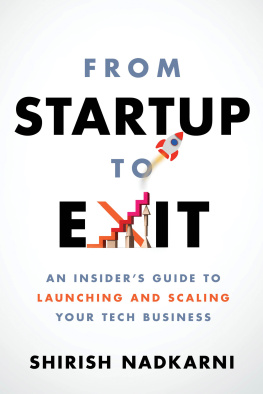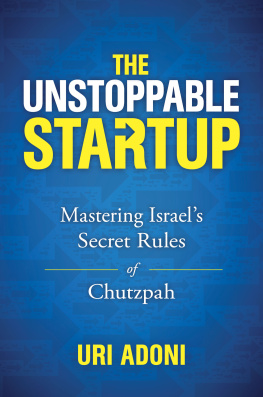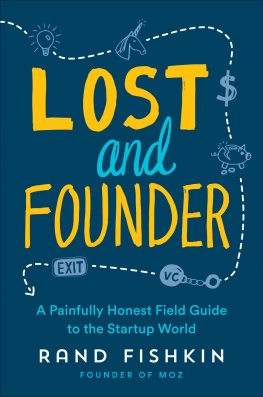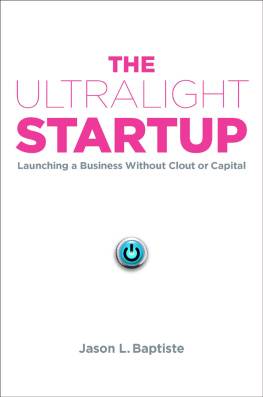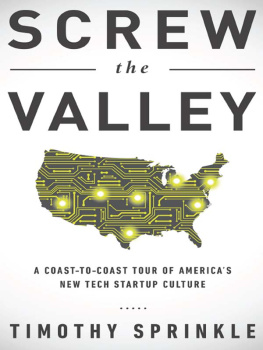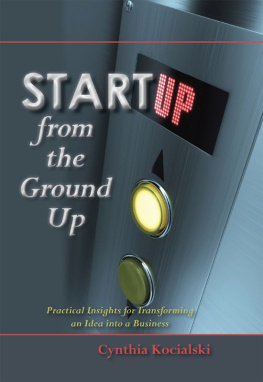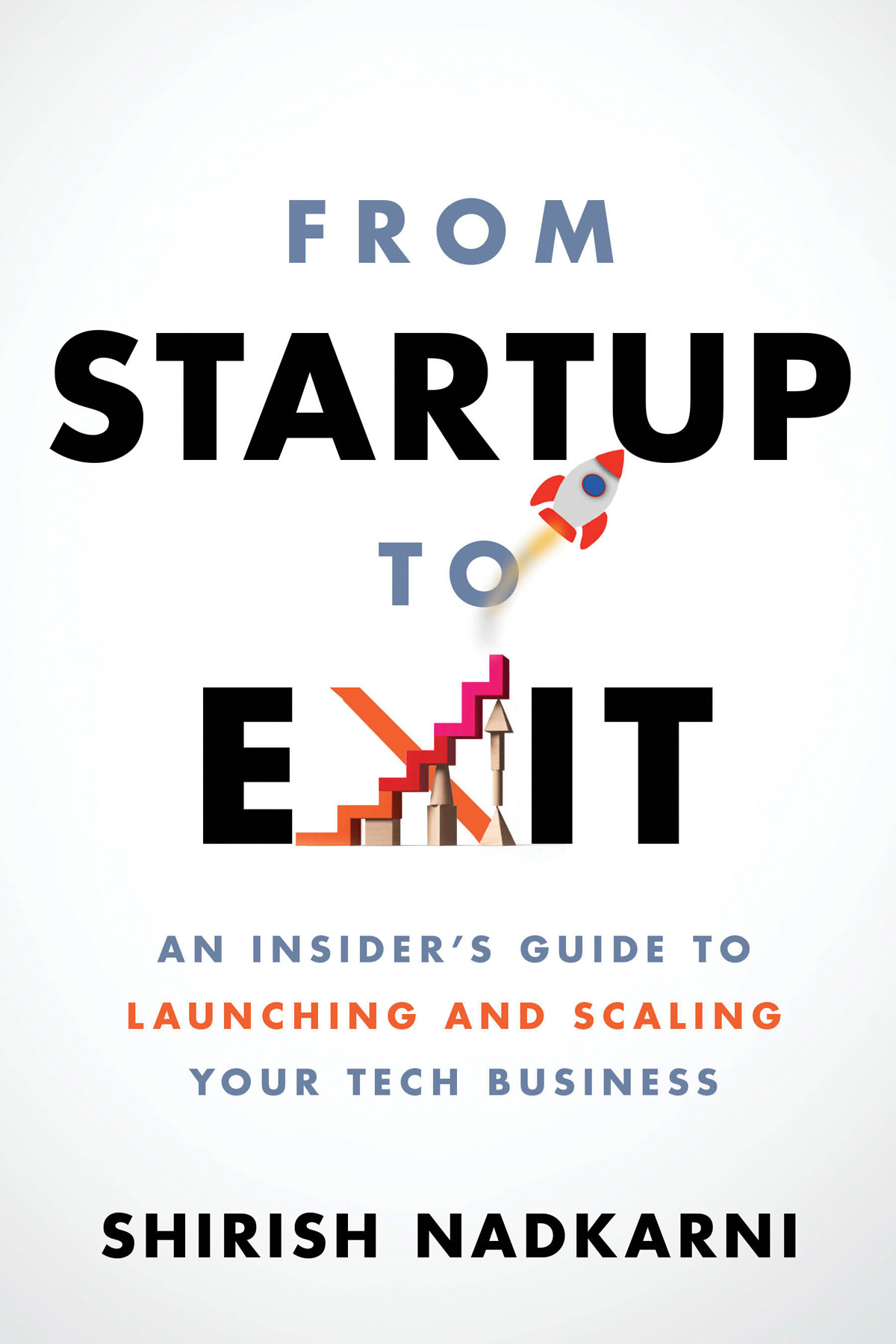2021 Shirish Nadkarni
All rights reserved. No portion of this book may be reproduced, stored in a retrieval system, or transmitted in any form or by any meanselectronic, mechanical, photocopy, recording, scanning, or otherexcept for brief quotations in critical reviews or articles, without the prior written permission of the publisher.
Published by HarperCollins Leadership, an imprint of HarperCollins Focus LLC.
Any internet addresses, phone numbers, or company or product information printed in this book are offered as a resource and are not intended in any way to be or to imply an endorsement by HarperCollins Leadership, nor does HarperCollins Leadership vouch for the existence, content, or services of these sites, phone numbers, companies, or products beyond the life of this book.
ISBN 978-1-4002-2535-4 (eBook)
ISBN 978-1-4002-2534-7 (PBK)
Epub Edition June 2021 9781400225354
Library of Congress Control Number: 2021938402
Printed in the United States of America
21 22 23 24 25LSC10 9 8 7 6 5 4 3 2 1
Ebook Instructions
In this ebook edition, please use your devices note-taking function to record your thoughts wherever you see the bracketed instructions [Your Notes]. Use your devices highlighting function to record your response whenever you are asked to checkmark, circle, underline, or otherwise indicate your answer(s).
Information about External Hyperlinks in this ebook
Please note that the endnotes in this ebook may contain hyperlinks to external websites as part of bibliographic citations. These hyperlinks have not been activated by the publisher, who cannot verify the accuracy of these links beyond the date of publication
CONTENTS
Guide
IN 1999, WHEN I DECIDED to leave Microsoft to start my first company, TeamOn, it seemed like a daunting task. I had an idea for the company I wanted to build, but I had no cofounder. While I was in the middle of the dot-com boom, the internet was still immature and there were very few resources available to educate a first-time founder. I recall that I found a book that explained the venture capital ecosystem and the fundamentals of fundraising and term sheets. However, the book didnt cover the basics of idea validation, achieving product/market fit, or how to develop a go-to-market strategy, all essential concepts to building a successful company.
I struggled to get the company off the ground initially. After many months of searching for a cofounder with the right technical expertise, I recruited my eventual cofounder, Shaibal Roy, in the San Francisco Bay Area. Shaibal was intrigued by my idea but was not willing to leave his company and relocate to Seattle where I was based. We finally agreed that he would work part-time on my startup until I successfully raised a Series A round. Fortunately, we were at the height of the dot-com bubble at that time, and I raised a $15 million round to fund the company. As you will read later in this book, the original idea didnt work out, and I had to pivot the company before we found success through an eventual acquisition by BlackBerry.
Its been twenty years since the start of my entrepreneurial journey. I am surprised that there have been very few good books written in the meantime covering a founders journey all the way from ideation to exit. Venture Deals, written by Dan Shapiro, another Seattle-based serial entrepreneur, is a personal favorite. He details his learnings founding and running multiple startups. Still, as I advised many founders, I felt that founders could benefit from having a virtual seasoned advisor at their side who could guide them along the entire journey in all aspects of company building.
My initial venture in helping startup founders began with the founding of the TiE Entrepreneur Institute in Seattle in 2018. TiE is a global nonprofit focused on fostering entrepreneurship with more than sixty chapters all over the world. I have served as president of the TiE Seattle chapter and have been on the board for the last five years. The TiE Entrepreneur Institute was organized into three modules with fifteen different sessions covering a variety of topics, including company formation, ideation, fundraising, and go-to-market strategy. The sessions were conducted by experienced entrepreneurs, venture capitalists (VCs), and lawyers along with a fireside chat with successful entrepreneurs. The TiE Entrepreneur Institute was very well received and has now been conducted over Zoom for all TiE chapters around the world.
In 2019, to spread the word further, I started writing a series of blog articles on LinkedIn and Medium covering many of the same topics as the TiE Entrepreneur Institute. By happenstance that year, I met a former Microsoft colleague, Kumar Mehta, who is the author of The Innovation Biome. When Kumar heard of my blog articles, he encouraged me to convert them into a book. Coincidently at that time, HarperCollins had entered into a relationship with the Microsoft Alumni Network to publish books written by Microsoft alumni. I contacted HarperCollins and reached an agreement with them to publish this book under the Microsoft Alumni Network imprint. My vision for the book is to cover all aspects of an entrepreneurs journeyfrom ideation, company formation, fundraising, and scaling the company to eventually achieving an exit.
The book is organized into five sections.
In , I discuss what makes a good idea for a startup. I outline the strategic considerations to determine the viability of an idea. For example, a platform shift is an ideal time to disrupt incumbents, as companies like Amazon and Netflix have shown. I discuss the process for finding product/market fit and how to go about executing a pivot if your original idea is not getting traction.
In , I discuss the fundamentals of forming a company. I outline the various options, which include S corporation, LLC (limited liability company), and C corporation, and the pros and cons of each. I discuss the thorny issue of splitting up founder equity, which can be tricky given that each founder brings different capabilities and contributions to the table. Next, I explain the concept of cap (capitalization) tables and how the equity is split up among founders, investors, and employees. I provide an example of a financing to explain how the cap table changes as you go through various financing rounds. Finally, I explain the concept of startup options and the difference between incentive stock options (ISOs) and non-qualified stock options (NSOs).
In , I discuss the various sources for raising funding at different stages of your company. I outline different types of funding vehicles, such as convertible debt, SAFEs, Series Seed, venture debt, crowdfunding, and the pros and cons of each. I explain the meaning of various terms in a term sheet for raising a preferred round of equity financing. It is important that you understand all these terms in order to properly negotiate a term sheet with your VC investor. Finally, I discuss how to build a compelling investor pitch and provide you with a detailed outline for an investor presentation.
In , I discuss various aspects of growing and managing your company, including hiring great employees, building a vibrant company culture, and becoming a great leader. I outline different options to develop a sound business model for your company. I explain the core concepts of unit economics so you understand how to balance your cost of acquiring your customers against the lifetime value that you generate from them. Finally, given the major downturns that we experience every decade or so, this section outlines how CEOs should manage their companies through deep recessions and emerge in one piece at the end of it.

